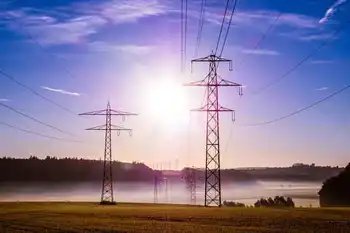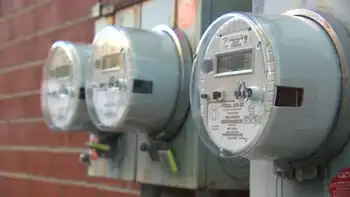Green energy projects see breakthroughs
By electronic design
Substation Relay Protection Training
Our customized live online or in‑person group training can be delivered to your staff at your location.

- Live Online
- 12 hours Instructor-led
- Group Training Available
Four standout projects, partially funded by the U.S. government, in particular the Department of Energy, have made significant strides in shaping the future of American energy consumption.
In the realm of solar power, Sandia National Laboratories has highlighted its partnership with Stirling Energy Systems (SES) and Tessera Solar in the enhancement of its SunCatcher power system, which will appear for the first time at the National Solar Thermal Test Facility (NSTTF). The four revamped solar power collection dishes feature an updated design suitable for commercial use in 2010.
According to Chuck Andraka, Sandia’s head project engineer, “the four new dishes are the next-generation model of the original SunCatcher system. Six first-generation SunCatchers built over the past several years at the NSTTF have been producing up to 150 kilowatts of grid-ready electrical power during the day. Every part of the new system has been upgraded to allow for a high rate of production and cost reduction.”
For the past five years, SandiaÂ’s concentrating solar-thermal power (CSP) team has partnered with SES in the hopes of enhancing the system design and operation, says Sandia. With the CSP system, the SunCatcherÂ’s precision mirrors are connected to a parabolic dish and attract sunlight onto the receiver, which conducts the heat to an engine made by Stirling. A sealed system packed with hydrogen, the engineÂ’s piston is driven by the change in pressure produced by temperature changes in the gas. This piston generates mechanical power, which runs a generator and creates electricity.
The improved SunCatcher weighs 5,000 lb less than the original model, is round instead of rectangular, has better optics, and has 60% fewer engine parts. It also has pared down the number of mirrors by half, and the remaining mirrors are parabolas with stamped sheet metal comparable to that of a carÂ’s hood. In fact, these mirrors have been created with automobile manufacturing techniques.
Sandia says that high-volume production, cost reductions, and easier maintenance will occur as a result of the changes. The lab also developed a device measuring the mirrorsÂ’ quality that takes less than 10 seconds, in contrast with the original modelÂ’s hour-long procedure.
Steve Cowman, CEO of SES, added that “the new design of the SunCatcher represents more than a decade of innovative engineering and validation testing, making it ready for commercialization. By utilizing the automotive supply chain to manufacture the SunCatcher, we’re leveraging the talents of an industry that has refined high-volume production through an assembly line process. More than 90% of the SunCatcher components will be manufactured in North America.”
The improved SunCatcher, according to Andraka, not only reduces cost and land use but also is more environmentally friendly. In addition, he said that the SunCatchers “have the lowest water use of any thermal electric generating technology, require minimal grading and trenching, require no excavation for foundations, and will not produce greenhouse gas emissions while converting sunlight into electricity.”
Another partner, Tessera Solar, is in the midst of constructing a 60-unit plant that has a 1.5-MW-producing ability by the end of 2009 in either Arizona or California. For perspective, 1 MW can power roughly 800 homes, says Sandia. Afterwards, this solar dish technology will be utilized in the development of solar generating plants in Southern California with San Diego Gas & Electric in the Imperial Valley, Southern California Edison in the Mojave Desert, and CPS Energy in West Texas.
One thousand MW of electrical-power generation is predicted by the end of 2012 for these plants.
Sandia reports that as of 2008, an original-model SunCatcher set a record with a 31.25% net efficiency rate, which surpassed the 1984 record of 29.4%.
Facing the same problem as other alternative energies, hydrogen has been considered as a substitute fuel for cars, but has not been feasible until the arrival of new technology. In the case of hydrogen, which is the most abundant element in the universe, nanotechnology has renewed hope in this alternative green energy.
By utilizing hydrogen to fuel cars, SLAC National Accelerator Laboratory (sponsored by the Department of Energy) hopes that our consumption of carbon-based energy will decrease. Storage continues to be one of the greatest obstacles to hydrogen gas use, but new research has increased its hypothetical chance of success. To be safe for passenger cars, hydrogen must be contained in a low-pressure tank that is leak-proof, with a storage capacity and weight that strike a balance between safety and efficiency. SLAC hopes to achieve this balance, as industrial containers cannot be used for passenger cars.
To solve this problem, researchers are considering carbon nanotubes, which are miniscule tubes comprising carbon molecules, for hydrogen tanks. They are currently being chemically produced on silicon plates, with their walls reaching one atom thick.
Considering the fact that carbon and hydrogen can form chemical bonds, the structure of the nanotube also is beneficial as each carbon atom, at surface level in the one-walled nanotube, can bind with a hydrogen atom. Coined 100% absorption, SLAC states that this idea has finally moved beyond the hypothetical to be a viable real-world option.
Although a few years are needed to further develop this technology, discovering the potential of 100% absorption has surpassed the U.S. Department of EnergyÂ’s plans for the technology.
The importance of this development lies in the hope that scientists and engineers will be able to use this information in the move towards hydrogen-fueled cars.
Geothermal power, another alternative energy source, has also been enhanced with increased awareness of its activities recently with the AltaRock project. AltaRock plans to use geothermal energy as part of its Engineered Geothermal Systems (EGS) project, which is located at the Northern California Power Agency (NCPA) Geysers Power Facility in northern California and has received a grant from the U.S. Department of Energy.
According to AltaRock, the EGS technology differs from that of previous projects as it does not require natural hot-water reservoirs underground, but can create them using water injections.
Choosing a site with hot basement rock, usually found in areas prone to earthquakes, AltaRock plans to produce continuous electricity, as opposed to other alternative energies that have some variability. To do this, the company will utilize a well that is 2 to 3 miles deep where water can be pumped down to create fissures in the rock.
Since the stone is heated by magma from the earthÂ’s core, AltaRock asserts that it provides a good heating system for the water that will circulate there. From that point, the water will be pulled back up to the surface, which results in lower pressure and steam-generation. The steam will revolve turbines, generating electricity. The cool water will then be sent back underground to repeat the process.
According to a study by MIT, in 50 years EGS has the potential to cover up to 10% of AmericaÂ’s electrical consumption at prices comparable to those of fossil-fueled electricity. AltaRock aims to utilize an existing NCPA Geysers well and dig a new one to work with the underground fracture system.
According to a New York Times story, a similar geothermal project took place in Basel, Switzerland, but was forced to halt activity due to an earthquake generated by the project. The 2006 earthquake measured 3.4 on the Richter scale and created a city-wide scare.
Because of this event, AltaRock has made safety a priority and chose a location, the Geysers, which has been an active geothermal site for 44 years. The location also has a relatively small fault that, according to the company, generates small earthquakes.
AltaRock does not expect these small earthquakes to be disruptive, and its studies predict the largest-estimated earthquake to be 10 times smaller than the one experienced in Basel.
In addition, AltaRock has installed precautions such as underground seismic monitoring devices and controls designed to halt activity if necessary. Rock fracturing will occur at a lower pressure than it was in Basel, and a pressure-relief option can stop the project as a safety measure. The company expects its EGS-patented designs to keep the project safe and under control.
Besides these safety measures, AltaRock has kept area residents updated about their activities and set up a ground motion sensor designed to offer seismic information online.
Two employees of the U.S. Department of EnergyÂ’s Ames Laboratory, Rebecca Shivvers and John Clough, have made the jump to home wind energy with the installation of their own residential wind turbines. Although hybrid cars and energy-efficient products have become more popular, home wind power has not yet gathered a large following.
Labeled a pioneer, Shivvers claims the desire to be self-sufficient drove her to adapt her home to wind power. Clough cited not only the green aspect of wind energy, but also the federal governmentÂ’s Recovery Act, which allowed 30% of the bill to count as a tax deduction. Both Shivvers and Clough noted this act as a major incentive to their plans, and Shivvers added that the lack of an Iowan sales tax contributed as well.
They have garnered attention from the media, with Shivvers featured on the Des Moines WHO news station, and Clough on Iowa Public TelevisionÂ’s Market to Market program. This coverage led to increased public awareness of the wind turbines, and both Shivvers and Clough noticed considerable attention by their neighbors and strangers, who have expressed interest in the technology by seeing it either on television or driving by their houses. In fact, Clough first received information and guidance from a nearby resident who owned a turbine, who partly inspired his project.
Both homeowners experienced obstacles to their progress, and Shivvers had to upgrade her turbineÂ’s structure to keep it efficient and safe. Specifically, her original four-cylinder turbine had technical problems with wobbling, spinning too fast, and finally stopping altogether due to grid voltage. The company kept track of these difficulties and upgraded the structure to a five-cylinder, thicker monopole. Each cylinder is situated inside another like Russian nesting dolls, varying from 11 to 18 inches, providing added strength and stability to the turbine.
Another obstacle, said Shivvers, was obtaining a $1 million insurance policy for the electric company, which proved difficult as a residential homeowner looking to install a wind turbine. Clough also noted that extensive research was necessary before the turbine could be installed. Overall, Shivvers determined that the process took a total of six months, but could be reduced to one month.
The move to residential wind power differs since it is not only industrial, but is being adapted for home use. Clough, however, pointed out that although it is green technology, the wind turbine cannot cover all of the homeÂ’s electricity needs, since wind power is variable. It is necessary, then, to have other means of power available for the household, in addition to the turbine.
Shivvers added that residents need plenty of space for the turbine as well. Both of their turbines are 50 feet tall, and CloughÂ’s blade diameter reaches 12 feet. On a windy day, Shivvers calculated 25 kilowatt hours of energy.
For Clough, however, a calm day in the summer only generated 5 kilowatt hours, showing the variability of wind power.
Both Shivvers and Clough have the same computer software installed in a wireless box that tracks the tower. This device monitors a variety of factors, including the amount of electricity production, a continuously updated chart of current power generation, and carbon savings in comparison with that of regular electricity.











